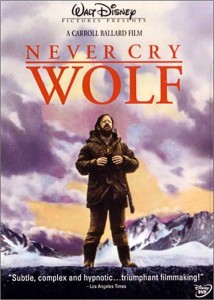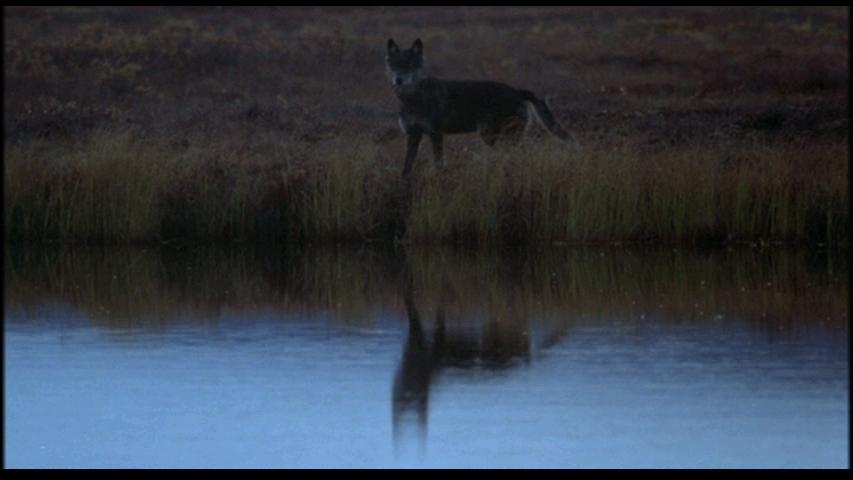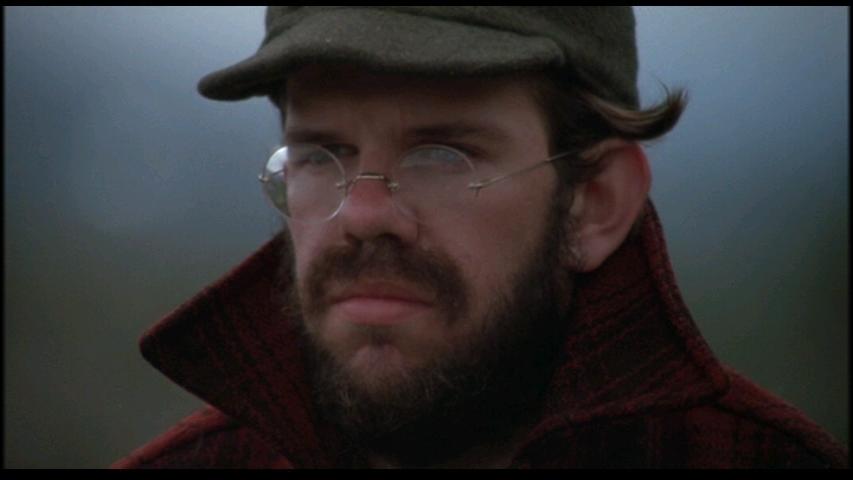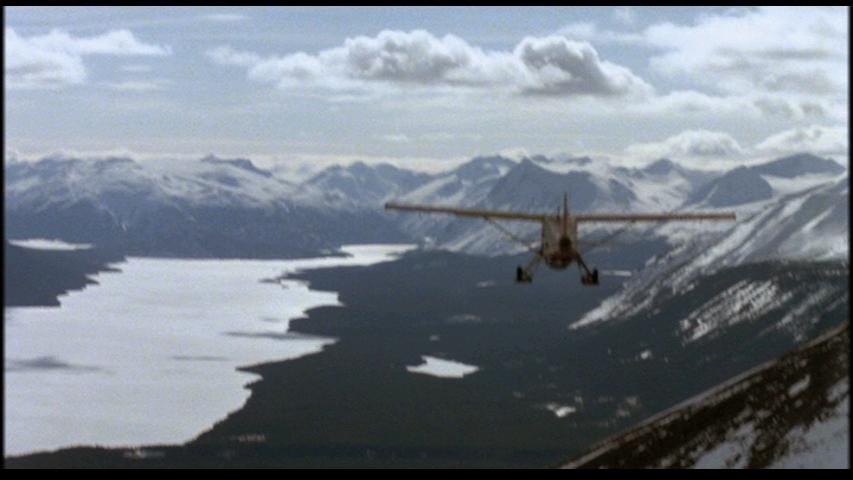“In the end there were no simple answers, no heroes or villains; only silence.”
|

Synopsis:
A government researcher (Charles Martin Smith) is sent into the Arctic wilderness to investigate the effect of wolves on the caribou population.
|
|
Genres, Themes, Actors, and Directors:
- Antarctica and the Arctic
- Character Arc
- Native Americans
- Scientists
Response to Peary’s Review:
Carroll Ballard’s cinematic adaptation of Farley Mowat’s bestselling semi-fictional memoir features stunning cinematography, a slow yet compelling narrative, plenty of unexpected humor, and “the rare opportunity to witness scientific methodology in practice.” As Peary notes, Smith was “an inspired choice” to play Mowat’s character (here named Tyler); his natural pluck and good cheer make Tyler’s survival in the seemingly barren environment plausible. It’s incredibly exciting to watch Tyler interacting with the wolves, gradually understanding more about their way of life; and his naked run with the caribou pack — while perhaps a bit cliched — nonetheless effectively shows the transformation he’s undergone during his months in the Arctic.
Redeeming Qualities and Moments:
- Beautiful cinematography

- A fascinating look at the little-understood culture of wolves

- A respectfully authentic treatment of Arctic natives

- Charles Martin Smith as the tenacious biologist who learns to survive and thrive in the wilderness

- Smith learning to eat mice as nonchalantly as popcorn

- Smith’s hair-raising airplane ride with pilot Brian Dennehy

Must See?
Yes. This enjoyable film merits at least one viewing, and may become a repeat favorite.
Categories
- Good Show
- Historically Relevant
Links:
|
One thought on “Never Cry Wolf (1983)”
First viewing. A tentative once-must – as worthy subject matter that will take the seasoned FF out of his / her comfort zone. Even though it seems a bit flawed (the latter part of the film seems to lose its footing a bit), its unique nature also seems to merit a viewing. But I find it hard to imagine it as a “repeat favorite” – unless this kind of nature tale really is your thing.
I was skeptical early on – when I learned that Smith was being sent to the Arctic – ALL ALONE!!! This just didn’t seem at all plausible – or even anything resembling common sense. What would be the point of having no additional help when entering a remote (to say the least) area that you knew nothing about and had scant training (if that) in dealing with? On the surface of it, it felt bonkers.
But I figured… ok, I’ll try to accept the film on its own terms. From there, it becomes a bit more acceptable when you realize that there are some natives around to help. (But still… he didn’t know that prior.)
Even though this isn’t the type of film I would be drawn to on my own, I did find the exploration of wolf life fascinating. (Yes, the photography is gorgeous… from the distance of a living room. You’d have to really love mountains, cold and isolation to think otherwise.)
I gather that the film’s ultimate point (at least to a significant degree) is ‘the rape of capitalism’. Although that seems to differ from the original memoir. According to Wikipedia: “Also in the book, the wolves are not killed and neither did the bush pilot bring in investors to build a resort.” Still, it’s instructive to keep in mind that Smith’s character is sent there with the (false) belief that it’s just the savagery of the wolves that is causing caribou to become extinct. The truth (as expected) is much more intriguing. …It would have been nicer to put together the mission’s intent and the mission’s outcome as more of a piece. But, if the whole film doesn’t seem to work ultimately, quite a bit of it does.
Smith’s “naked run with the caribou pack” made me think that might have been something Ken Russell would have come up with. There’s something vaguely D.H. Lawrence about it. 😉